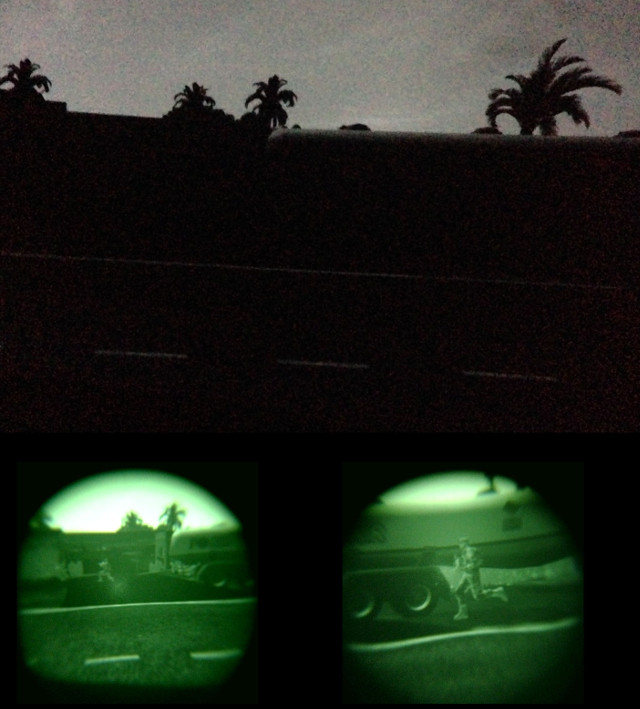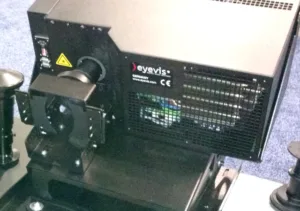Adding night vision goggle (NVG) capability to a projector is a fairly big deal. Typically, this means adding Infrared LEDs to provide the IR light output needed to stimulate the NVGs. But the NVG image typically is delivered to the projector from the image generator (IG) as a separate channel of data. That means the projector needs to have a separate input and board to manage this content and drive the DMDs and LEDs. That adds a lot of cost (Sony’s optional NVG addition on their new 4K projector is $17,500 for example.)
According to Hans-Guenther Nusseck, Eyeviz has developed a method for NVG use that is much lower cost. This was demonstrated in a darkened room at /ITSEC 2015. The idea is use the red channel (no additional IR LED) to stimulate the NVG and not have this stimulation visible without the NVG goggles on. The key is to recognize that in dark environments, your eye is dark adapted, but there are still light levels that are below the threshold of vision – even when dark adapted. This is where the NVG stimulation is added in the red channel – i.e. small modulations in the red light output that are not visible to the naked eye, but which are detectable by the night vision goggles.
This was proven in a demo where you could see a dim RGB image, but extra details would appear when the night vision goggles were worn (photo). The black level was also extremely low on this projector, partially aided by the use of a neutral density filter, which can be placed on a motorized sled to move in and out of the optical path when needed.

Eyevis says that only a few companies offer the NVG option and it is expensive as it costs a lot of money to develop and there will only ever be a limited number of sales that can recoup this investment (maybe one half to a million dollars in development costs) – and maybe make a profit.
Nusseck say their approach will work well in medium dark scenarios like full moon and over cities. This is will also require that the image generator embed the NVG data in the red channel as well. But for no moon scenarios or in the desert, a standard IR NVG approach will be needed.

